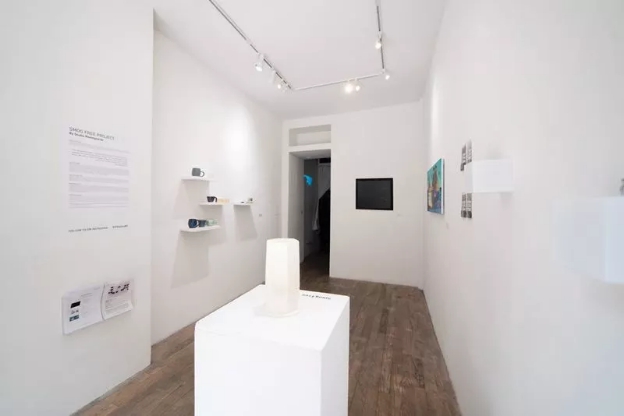
“似绿非绿”展览现场。图片:致谢Ruting Li
以艺术家视角,把脉环境危机、思考生态、消费和资源分配关系,探究人类活动和气候改变关联的艺术和设计作品联展——“似绿非绿”(Kind Of Green),落户于纽约的怡画廊(Yi Gallery)交出了自己的答卷。
今年6月怡画廊“似绿非绿”展览(←点击展览名称了解更多)带来了挪威艺术家安妮·卡特琳·森斯塔(Anne Katrine Senstad)、亚裔美国艺术家卢思洁 (Si Jie Loo)、美国艺术家詹米·马丁内斯(Jamie Martinez)和荷兰阿姆斯特丹罗斯加德工作室(Studio Roosegaarde)的代表作。
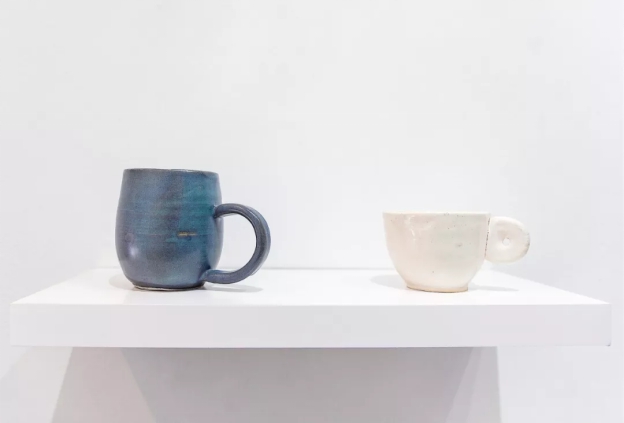
“似绿非绿”展览现场。图片:致谢Ruting Li
相关阅读:
纽约 |艺术设计联展 :Kind Of Green >
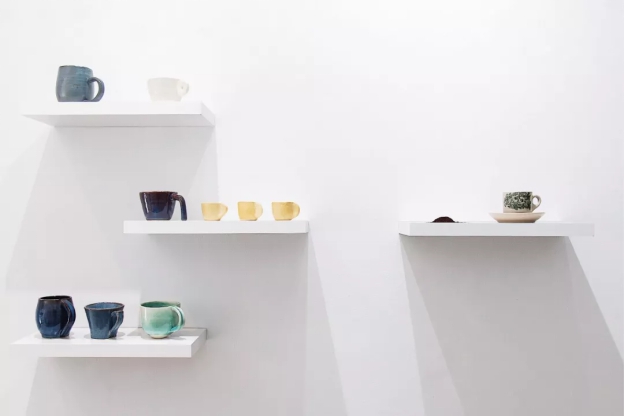
卢思洁,《品味的特权》。图片:致谢Ruting Li
作为一名艺术家,我想继续成长,成为在艺术界里遨游的亚洲女性,成为一名关心环境且极具思想的社会公民。更期待让我的声音在这个令我倍感饱和的数字时代被倾听。
——卢思洁
其中,怡画廊(←点击画廊名了解更多)带来了艺术家卢思洁的全新委派装置《品味的特权》。作品从艺术家个人视角,探究并回应发生在她身边的人与物;向观众呈现了消费与选择间的差异,同时亦将劳动生产和资源分配过程中存在的权力不平衡问题以物物对话的形式,引入“大环境”的语境中。
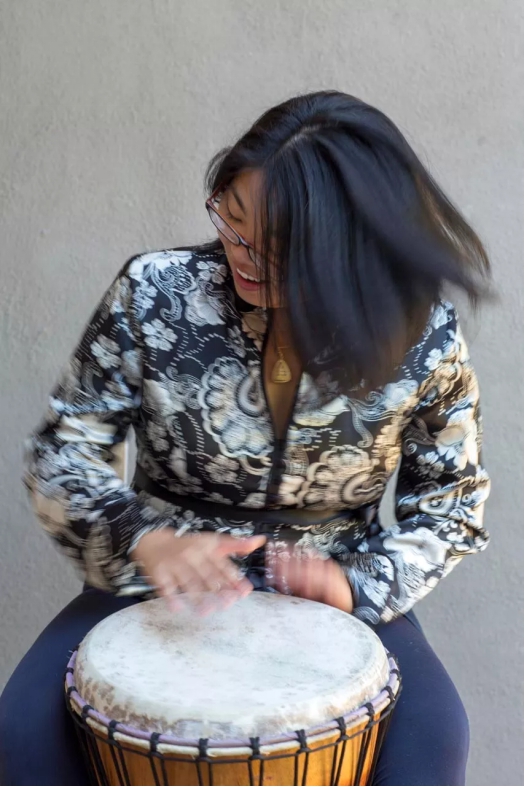
艺术家卢思洁。图片:卢思洁工作室
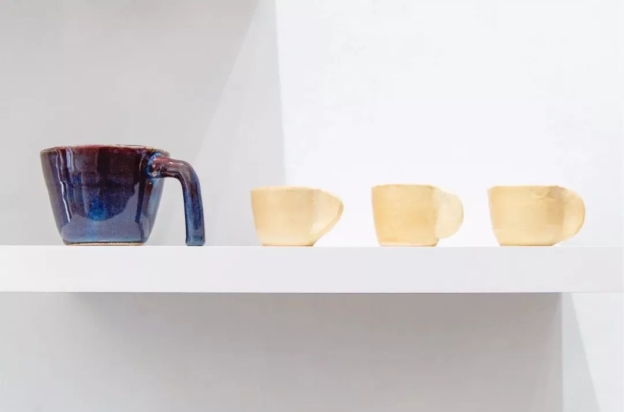
卢思洁,《品味的特权》。图片:致谢Ruting Li
《品味的特权》由两部分组成,左侧白色架子上摆放着艺术家制作的精致手工咖啡瓷器,里面装着研磨过的高级咖啡粉;右侧这组器具则是艺术家从马来西亚超市买来的普通咖啡杯,杯外摆放着廉价咖啡粉。卢思洁曾回忆,小时候她在马来西亚喝的咖啡很普通,通常由低廉的咖啡粉混着热水和炼乳冲泡而成,口感酸涩,呈淡棕色。远不如在精品咖啡屋里,充满异域情调、昂贵的非洲进口咖啡品质好,进口咖啡不单包装精美,还通常贴着“公平贸易”的标签(尽管如此,这样的标签仍存在不少质疑与非议)。

“公平贸易”的标签。图片:fairtradecertified.org
同样,艺术创作也是一项费力的劳动实践,艺术家常常在较为艰苦的条件下辛勤创作。然而,最终能消费得起艺术作品的往往还是极少人群,正如品质上乘,口感纯正的咖啡通常只供应一小部分人群。视觉上,艺术家向观者对比了她手工打造的别致咖啡杯与“大生产”下的现成物(readymade object);而实质上,这些造型、色泽、纹路各异的咖啡杯却向观者揭开了艺术家自己的体会。
从资源配置,还是决定选择,在她眼里“创作是一种奢侈品“。如果当代艺术的消费者与消费得起特制咖啡的消费者相提并论,而制造这种生活方式的文化生产者(这里指:艺术家)就能与劳作咖啡的农工不谋而合。在卢思洁看来,咖啡产业中显现的贫富悬殊与艺术商业中隐藏的阶级差异有着微妙的相似之处。

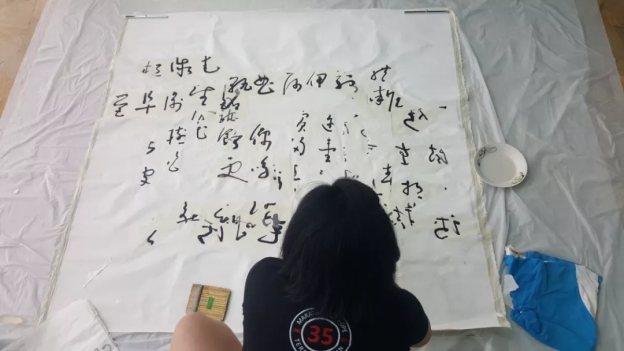
咖啡的农工与在工作室的艺术家。图片:网络 & 卢思洁工作室
展览期间,我们对话了艺术家卢思洁,探究她创作历程背后的故事,以及在她眼中咖啡产业与艺术商业帝国之间存在的生态系统与文化镜像。
怡画廊(Y)
x
艺术家卢思洁(S)
Y:你2012年从美国常青藤大学达特茅斯学院(Dartmouth College)毕业,有优越的条件去进行职业选择,你考虑过从事艺术以外的工作吗?是什么让你决定将艺术作为你的事业?
S: 达特茅斯学院的文科教育教会我通过各种方式来追求自己的兴趣。摩洛哥的伊斯兰留学之旅,让我的专业从人文地理转到了纯艺术。 我意识到,除了要知道我学了什么,我更感兴趣的是如何表达它。对我来说,表达我在视觉艺术方面的知识会给我带来更高的风险、挑战和挥之不去的问题,我个人喜欢困难的问题。
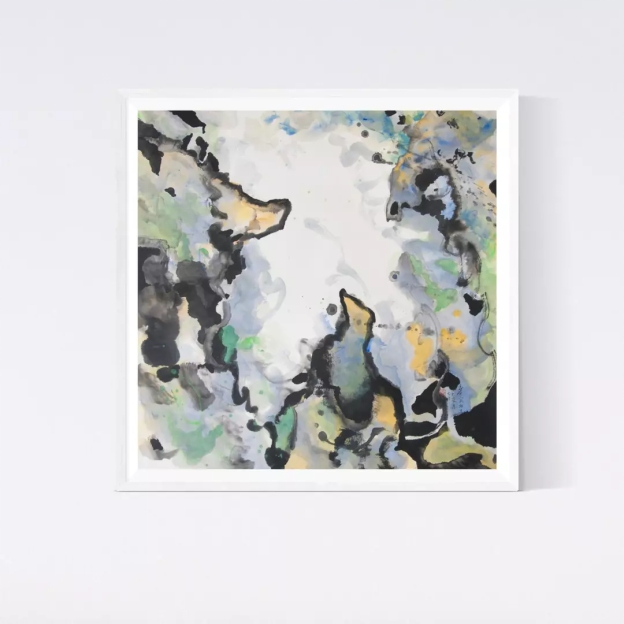
卢思洁水墨画《MOUNTAINOUS QI》。图片:怡画廊
毕业后,我又在达特茅斯学院做了一年的总统研究员(Presidential Fellow)。这一年帮助我进一步培养了对艺术的热情,并制定了对艺术追求的策略。因此,我申请并获得了为期一年的旅行奖学金,去重读家乡的影像,并追溯中国的文化脉络,这些也与我的文科背景相互联结。
Y:虽然你的创作以视觉艺术为主,但音乐、书法和写作是你艺术生活中非常重要的组成部分。你如何看待这些艺术创作之间的关联,它们对你的艺术创作产生了哪些影响?
S: 让我们面对现实吧,在不同语言间的转换就像同时转换了个性与传统,所以一开始不同的艺术流派感觉就像不同的语言,直到我(重新)定义了“能量”这个词,我感觉从击鼓、书法,以及太极等。我生来就明白“气”的概念,但从未把“气”的应用运用在我所受到的西方教育中。当我在鼓点中感受脉搏与节奏时,一切都回到了我的脑海中。我可以把太极、舞蹈和打鼓时对“气”的运用用到书法与绘画中去,反之亦然。
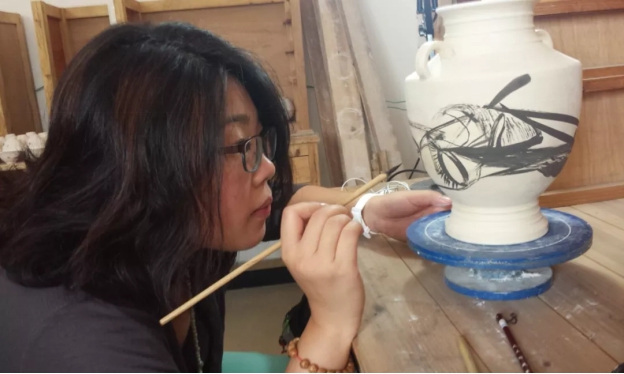
在工作室的卢思洁。图片:卢思洁工作室
Y:你的长卷纸上水墨和陶艺作品具有一种独特的古典美感,我们能看到中国书法和传统水墨对你的重要影响与情感塑造,可以描绘为一种高远且素雅的东方审美情节。然而,你在大学时专修了西方油画。从你起初的习作到如今的作品,我们看到了你作品中明确的东西方视觉元素的冲撞。然而这几年,这种冲撞感有所削减,是这样吗?
S: 自从我与南洋水墨画画家谢忝宋博士(Dr. Cheah Thien Soong)在马来西亚和中国走访了一年后,我这才意识到其实东西方一直都在对话。中国著名现代画家徐悲鸿在法国学习时,就将他的素描技艺融入他的水墨画之中。梵高的灵感源自日本浮世绘的空间布局(可以说与中国有间接关系)。换言之,他的画作较少强调西方视角。
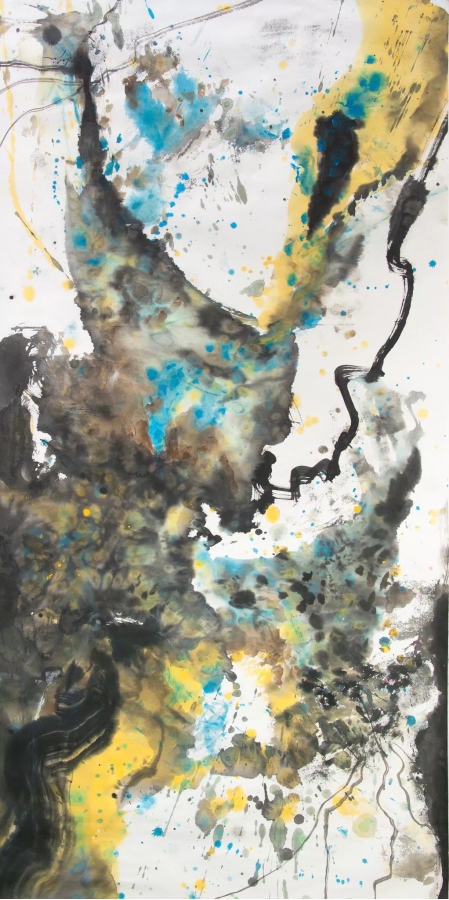
卢思洁,中国水墨画《星愿》。图片:卢思洁工作室
我成长在一个后殖民时代的马来西亚的中国家庭,多元文化是我的生活方式,我的艺术实践深受多方面的影响,比如西方油画、西非鼓、舞蹈、中国传统乐及武术等等。我面临的挑战是要使我作品所要传达意义与审美价值变得清晰,而不是“含混”。简言之,我要把我的言语说得中肯、清晰、有价值。
Y:在你最近的作品中,可以读出你这些年来深受多元文化的熏陶与启发。你是怎么将这些源于不同地域的灵感,在你的作品中自然而然地“释放与挥洒”?
S: 这些灵感有助于产生一系列的作品,这样我就可以反映一次特定的旅行,以及不同的作品主题。当我准备艺术创作时,我已经“捋顺”了我的灵感,手头有各式各样的照片与素描,知道我要用的调色板。绘画是对我已有材料、直觉和知识进行快速排序的决策过程。一幅成功的画作应该是所有这些元素的完美结合。
Y:除了进行创作以外,你也很关注人文社会的发展,以及对自己知识储备的温故知新,比如你会专门抽时间保证一定的阅读量和日常的书法练习。可以谈谈你的时间安排吗?
S: 理论上讲,还是自律的。但实际上,它更具挑战性。我们有各种各样的活动:讲座、参观博物馆、艺术家演讲。我想说的是,如果书法或太极以外的活动,能给我带来新活力、新知或友谊,它们会为我的艺术实践加分,而不是消耗我的精力。这样说来,我不会因为没有严格按照时间表而倍感内疚。
Y:你会将家庭时间写入你的日程表吗?作为职业艺术家,并没有传统意义上的朝九晚五,你觉得在时间管理方面最挑战的是什么?
S: 我们是人,必须把家庭生活融入到我们的艺术实践中。离开家人后,我花在电话会议上的时间比见他们本人的时间还要多。我把时差融入到我的时间管理中。当我在美国吃早餐时,通常是亚洲的晚间,这时我可以在我的家人睡觉前和他们聊天。达特茅斯学院绘画教授Enrico Riley曾告诉我,“你必须把艺术创作融进你的日常生活中,吃饭、洗澡、锻炼与睡觉。”这是一个很有价值的建议,因为我每天都在权衡我的选择,选择对我重要的事情。
Y:此次在怡画廊的展览中,你带来的《品味的特权》是一组装置作品(包括你的手工咖啡瓷器),大家对你的纸上作品较为熟悉。这组新作无论从题材,还是呈现方式上都较以往有所突破。这组作品的灵感从何而来?可以谈谈它对你有什么特别的意义与寓意吗?
S: 通常我会先去做一次实地考察,然后再回到我的工作室里为展览做准备。然而,这组装置作品给我的感觉更像是去设计一项艺术“作业”的答案(因为有策展人提前设定的主题)。我能够将我的足迹与可持续发展和消费主义这一更广泛的主题联系起来,这也是我想在未来作品中继续秉承的观点。
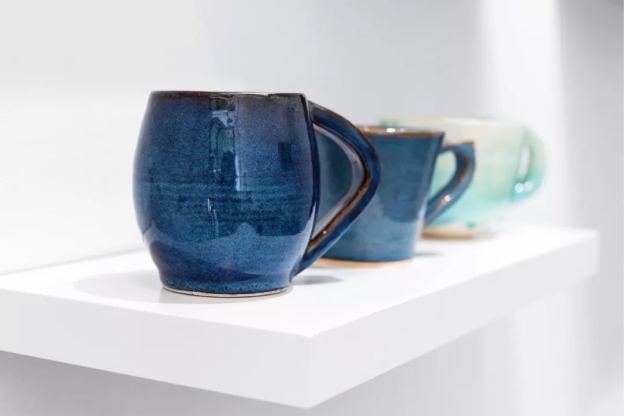
卢思洁,《品味的特权》(局部图)。图片:致谢Ruting Li
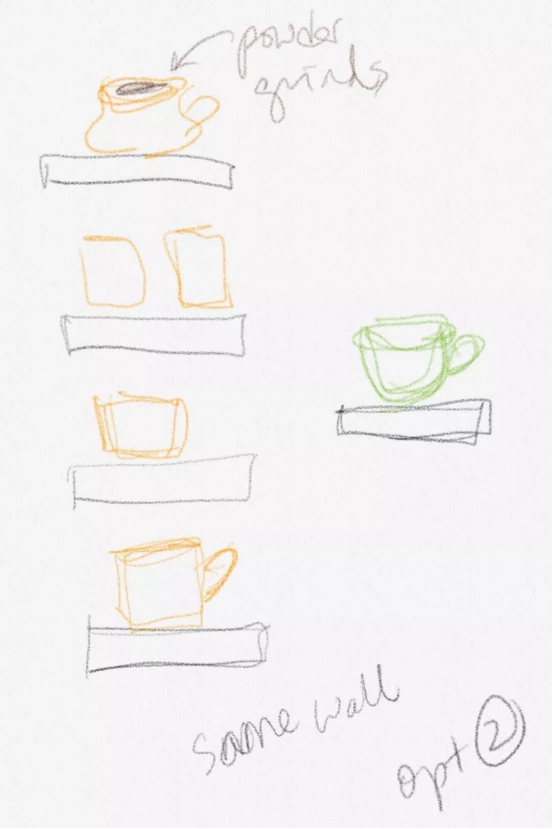
卢思洁,《品味的特权》草稿。图片:卢思洁工作室
这组作品是我对当今咖啡文化被星巴克等跨国企业严重商品化的一种质疑。现在的消费者,尤其在比较发达的地区,有诸多的选择。而在我的童年记忆里,喝咖啡这件事情非常朴实——华裔工人从辛苦一天的田间劳作中归来,去马来西亚的海南咖啡店喝便宜的咖啡,没有讲究,当然也没有更多的选择。
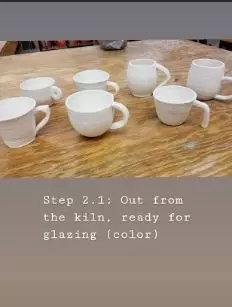
创作《品味的特权》的过程。图片:卢思洁工作室
从这个意义上讲,味觉就有了两层含义:咖啡实际的味道,以及我们的味觉(偏好)在消费行为中的作用。两者都需要训练并锐化我们的感官,以追求特定的品味。所以说,咖啡杯作为艺术作品的形式比抽象绘画更容易让观者参与其中。
Y:你会给自己制定五年或十年的工作目标吗?如果有,你接下来最希望完成的工作或者项目有哪些?
S: 在接下来的几周里,我将搬到一个更宽敞的工作室里,所以我特别兴奋,因为我能继续创作出更大型的作品,或者把事情弄得一团糟!我现在的工作室在我家里,所以多少有局限。作为一名艺术家,我想继续成长,成为在艺术界里遨游的亚洲女性,成为一名关心环境且极具思想的社会公民。更期待让我的声音在这个令我倍感饱和的数字时代被倾听。
文/采访:金维忻 & 张月怡
本文由怡画廊原创
如需转载,欢迎在公众号后台留言与我们联系
Yi Gallery怡画廊 成立于2018年,致力于推广当代艺术家,为多元化的创意人才提供自由的展示空间,媒介涵盖绘画、雕塑、互动媒体、诗歌、设计等。怡画廊定期举办艺术展览,策划公共项目,并组织品牌合作、品酒会、手工课和诗歌阅读等创意活动。

官方网站:gallery-yi.com
Instagram & Facebook: @yigalleryny
Artsy: https://www.artsy.net/yi-gallery
作品询价 | 商业合作,请联系:info@gallery-yi.com
了解更多艺术家信息,请访问怡画廊官网:
https://gallery-yi.com/collections/si-jie-loo
Yi Gallery
x
Si Jie Loo
Y: You graduated from Dartmouth College in 2012. As a graduate of a prestigious Ivy League school, you had other career choices. Have you ever considered pursuing a different profession other than art? And what made you decide to dedicate your career to art?
S: The liberal arts education at Dartmouth really taught me to sought after my interest through various means. One being an Islamic study abroad trip to Morocco that changed my major from a Human Geography to Studio Arts. I realized that on top of knowing what I learned, it is figuring HOW to express it that interests me more. In my opinion, expressing my knowledge in the visual arts posits a far higher risk, challenge and lingering sets of problems for me and I personally like difficult problem sets.
Upon graduation, I actually worked for an extra year at Dartmouth as a Presidential Fellow. This year helped further ground my passion for Arts and strategize ways to pursue it. Hence, I applied and received a one-year travelling fellowship to “(re)discover images of home” tracing my roots to Chinese traditional art and connect it with my liberal arts education.
Y: You are mostly a visual artist, but music, calliraphy and writing are also very important components of your art practice. How do you see the connection between different activitites? How do they inform your visual art making?
S: Let’s face it, switching between languages it’s like switching personalities and traditions all together, so at first the different genres of art feels like different languages, until I (re)define the word “energy” I feel from drumming, calligraphy, Taichi etc. I was born knowing the concept of “Qi” but never apply it into my western education. But it all came back to me when I felt the pulse and rhythms in drumming, the “Qi’ translates to the energy in calligraphy, painting, music and all things in life, if you commit yourself to observe it. I can apply the knowledge of “Qi” from doing Taichi, dancing and drumming back to how I apply my stroke techniques in calligraphy and painting, vice versa.
Y: We can see the influence of traditional chinese calligraphy and ink painting on your practice, especially in your long works on paper and ceramics, which have this delicate and classical beauty rooted in Eastern aesthetics. You actually studied western oil painting in college. In your earlier works, the “visual clash” between the East and West was strong. However, this kind of contrast is slowly becoming less visible. Do you think so?
S: Since spending a year from my traveling fellowship with ink painter Dr. Cheah Thien Soong in Malaysia and China, I realized that the west and east has always been in conversation. Famous Chinese Painter Beihong Xu studied abroad in France before incorporate his drawing technique into his infamous ink paintings. Van Gogh was inspired by the spatial arrangement of Japaness Ukiyo-e thus his paintings had less emphasis on Western perspective. Growing up from a post-colonial Malaysia in a Chinese family, multiculturalism is my way of life and my practice embraces the many influences I am exposed to such as western oil painting, West-African drumming and dancing, Chinese traditional music, martial arts, etc. The challenge is to make the influence and aesthetic clear in my works and not “muddy”, meaning saying what I want to say clearly.
Y: In your recent works, we could see the inspiration and influence from various cultures after years of immersions. How do you bring these different cultural influences together in your work and let them sync naturally?
S: It helps to produce a body of work in a series so that I could reflect on a specific trip, themes in different renditions. When I am ready to paint, I would have already read about my inspiration, have various photos and sketches within hands reach, know the color palettes I am going to use. The act of painting is a fast decision-making process of sorting the materials, intuitions and knowledge that is already in me. A successful painting would be a marriage of all those elements in sync.
Y: Other than art making, you also care deeply about other humanities disciplines. For example, you would make sure that you dedicate time to renew your knowledge through reading and daily calligraphy practice. What’s your time management strategy?
S: The answer in theory is self-discipline, however in practice it is much more challenging. We do have a whole variety of activities that come in the way: lectures, museum visits, artist talks. I make a point that if attending something outside of my calligraphy or Taichi practice will give me new energy, new knowledge or friendships, it will add to and not distract my art practice, hence I do not feel guilty for not following a strict schedule.
Y: Do you write “family time” into your schedule? There’s not really 9 - 5 in the traditional sense for professional artists. As an artist, what’s most challenging for you in terms of time management?
S: We are only human, and we do have to incorporate family life into our art practice. Being away from my family, I spend more time on conference calling than seeing them in person. I incorporate time-difference into my time-management. When I am having breakfast, it is usually nighttime in Asia hence I get to chat with my family before they go to bed. My Dartmouth painting professor Enrico Riley once told me, “you have to incorporate art-making into your daily rituals of meal-time, showers, exercise and sleeping”. That is such a valuable advice, because every day I am weighing my options, and I select my priorities.
Y: Your work “Privilege of Taste” is currently on view at Yi Gallery in New York, as part of a group exhibition. It’s an installation with coffee ceramic pieces, handcrafted by you. We are more familiar with your works on paper. This new work is real break-through in terms of both medium and presentation. Where did you draw inspiration from? What’s special about this work for you?
S: Usually I would complete an art research trip before working in my studio towards an exhibition. However, this installation piece felt more like an art assignment, though I was able to link my personal history into the broader subject of sustainability and consumerism, which is a point-of-view that I would like to continue in my future works. The inspiration came from questioning how the coffee drinking culture in the present day is commodified by the likes of “Starbucks” and other multinational enterprises, but my childhood memory of coffee drinking in the Hainan coffee shops was such a way of life when Chinese laborers return from a hard-day’s working in the field. Taste in this sense has two meanings: the taste of the actual coffee, and how our taste (preference) play in the act of consuming. Both require training and sharpening of our senses in pursuit of specific tastes. Therefore the form of coffee cups as artworks is more accessible to viewers to engage in this topic than say an abstract painting.
Y: Do you make five-year or ten-year plans for yourself? If you do, what would be the work or projects you most eagerly want to achieve in the future?
S: I am about to move into a larger studio in the coming weeks, so I am excited about making bigger works or make a mess! My current studio is out of my home, so it is still somewhat restricted. I would like to continue maturing as an artist, as an Asian woman navigating the art world, as a thoughtful citizen caring about her environment, and let my voice be heard despite living in this saturated digital sphere.
For additional information, please contact us at info@gallery-yi.com or +1 (929) 356-6087.
gallery - yi.com
原创: Yi Gallery NY Yi Gallery 怡画廊
